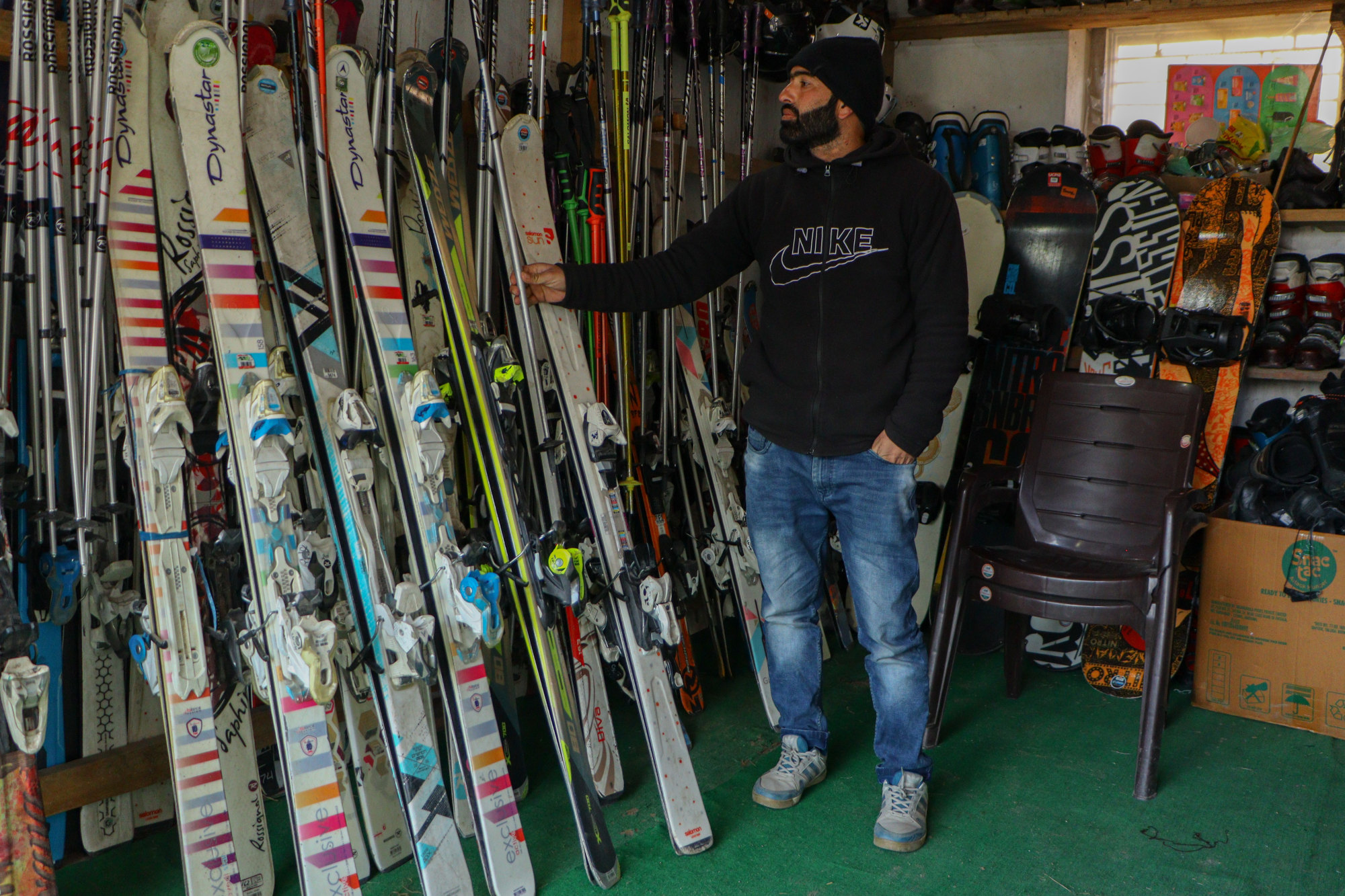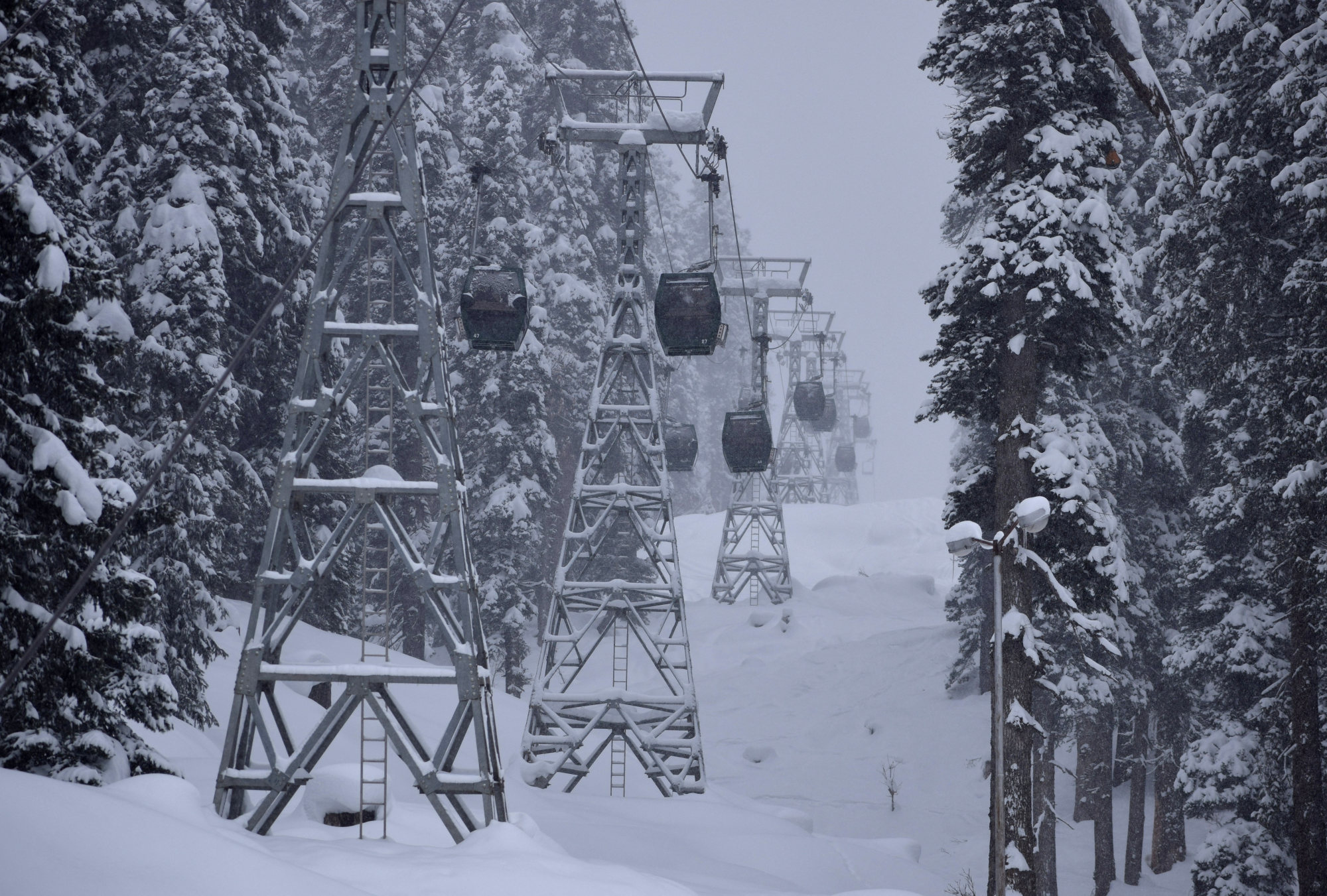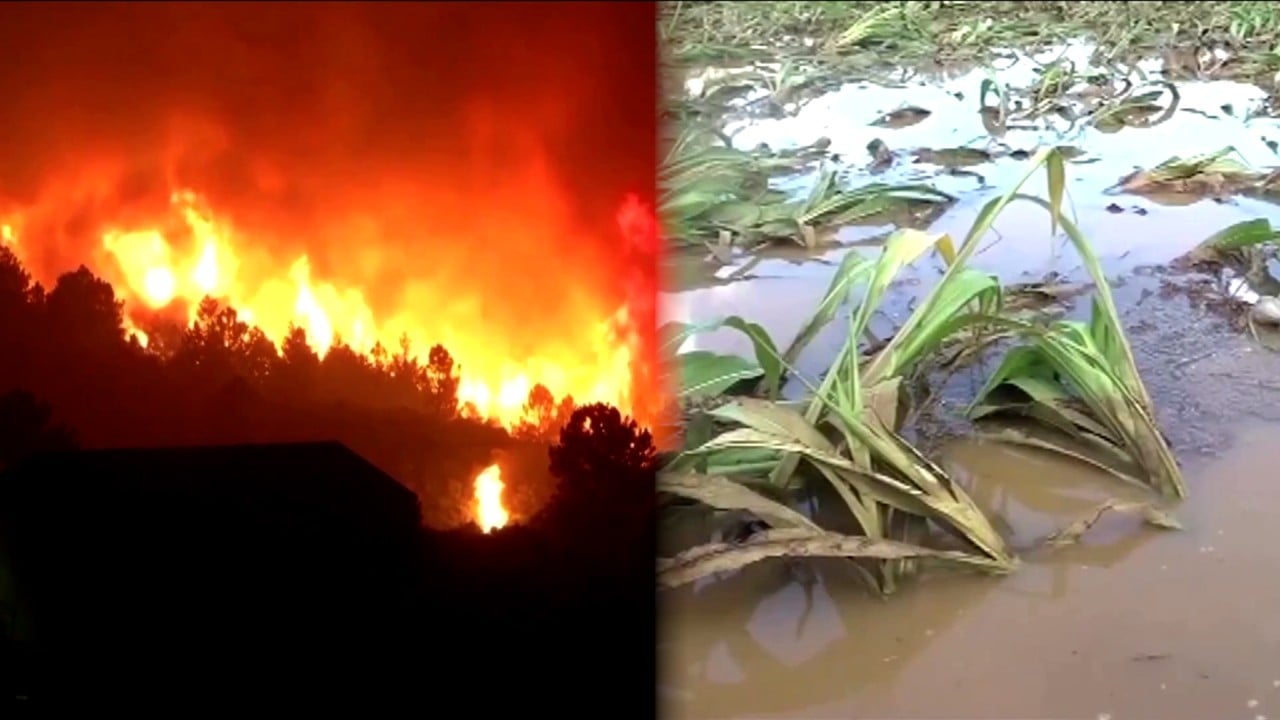Indian ski town devastated by lack of snow as climate change, El Nino bring dry winters to Himalayas
[ad_1]

Workers who typically cater to visitors, including sledge pullers, tea sellers, and other roadside vendors, are struggling due to the absence of customers. Ski rental shops and ski guides have also been hit hard.
“The lack of snow is causing a delay in the skiing season, which typically begins in early January,” said Danish Habib, a 25-year-old snowboard instructor and alpine tracker.
Indian weather stations have attributed the unusual weather to both global warming and the presence of El Nino, a sporadic climate phenomenon known to cause warm and dry conditions in the Indian subcontinent and other regions of Asia. Meteorologists say this current El Nino has been one of the strongest in years.
Anil Joshi, an environmentalist and the founder of the Himalayan Environmental Studies and Conservation Organization, attributed the absence of snow to a lack of western disturbances – a type of cyclonic storm from the Mediterranean that travel eastward, bringing rain and snowfall to the Indian subcontinent.
“Orchards and agricultural crops are also suffering. There are reports that agricultural crops are totally damaged. Ultimately, you may ascribe this to a simple phenomenon – it is global warming,” Joshi said.
“If there is no rain in winter, then there is also a threat of forest fires. There will be poor moisture in the soil. Even if there is rainfall in February, that will likely lead to an avalanche as it’s the kind of snow that doesn’t solidify,” he warned.
“This kind of phenomenon will repeat itself if we don’t control it.”
‘Floating in tears’: Indian farmers sing of loss from ‘cruel’ climate crisis
‘Floating in tears’: Indian farmers sing of loss from ‘cruel’ climate crisis
Hotels in the area have also been badly affected, with most recording a 50 per cent drop in reservations from the previous year.
Hotel manager Mudasir Ahmad said that in his fifteen years of working in Gulmarg, he has never encountered a situation like this before.
Officials estimate tourist numbers have dropped at least 60 per cent from the same period last year, when the resort welcomed nearly 96,000 tourists in January alone, including 547 international visitors.
Ashok Sharma, who has been coming to the area for the past six years, is “saddened by the lack of snow”.
“Even the upper reaches of the Gumarg, Afarwat, which are usually covered in a white blanket, now welcome us with very little snow,” he wrote in a post on the Gulmarg Avalanche Advisory Facebook page.

Data from the Meteorological Department indicates December 2023 saw lower temperatures and light snowfall at higher altitudes. The first two weeks of January saw a significant shortfall in precipitation, with only 11.6mm recorded.
That is 47 per cent lower than the average for this time of year.
“We had a dry spell in December 2018, another in January 2014 and one more in December 1998.”
Until the 1980s, we used to get snowfall from October to April. Now, due to global warming, this precipitation has changed
But he said that climate change was producing long-lasting changes to local weather patterns.
“Until the 1980s, we used to get snowfall from October to April. Now, due to global warming, this precipitation has changed. It has been observed that, instead of snowfall, we get more rain. We get snowfall only for a few days from January to February because average temperatures have increased,” he said.
While most of the Gulmarg community is alarmed by the weather, Mohammad Yaseen Khan, a 68-year-old local guide with 50 years of skiing experience, remains hopeful. Having worked in Gulmarg since 1974, he has witnessed mother nature’s unpredictability many times before.
Optimistically, Mohammad advised his clients to cancel their trips due to the lack of snow, but not without a glimmer of hope in his eyes. “There’s still a possibility of snowfall in the month of February.”
Additional reporting by Biman Mukherji
[ad_2]
Source link


